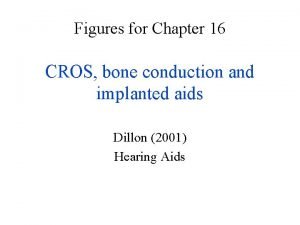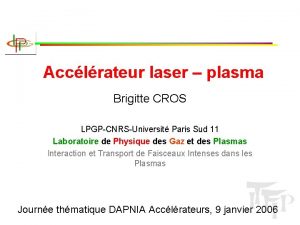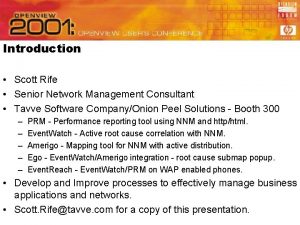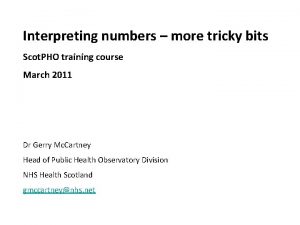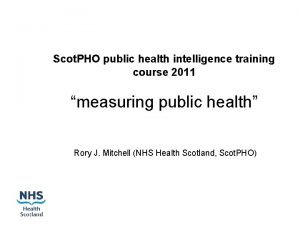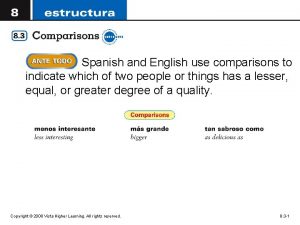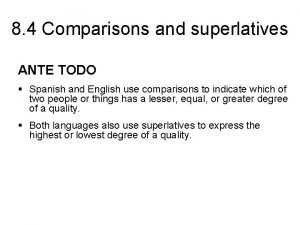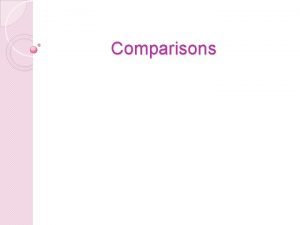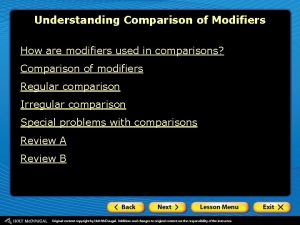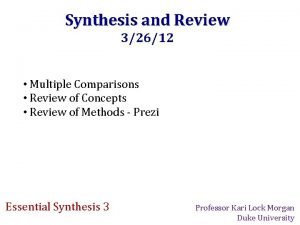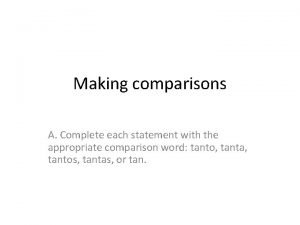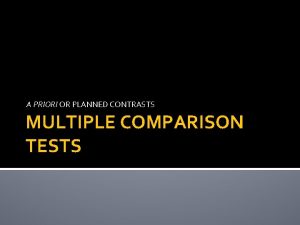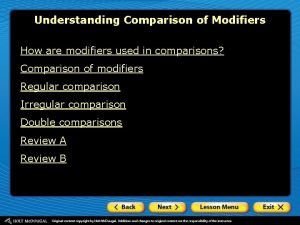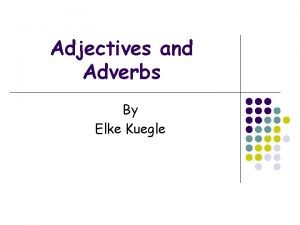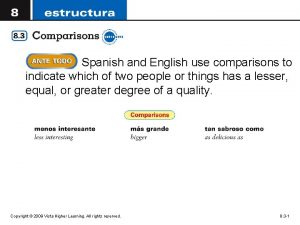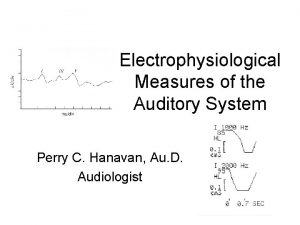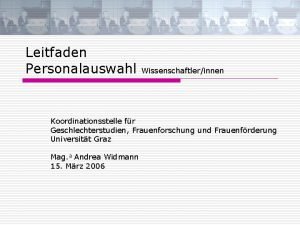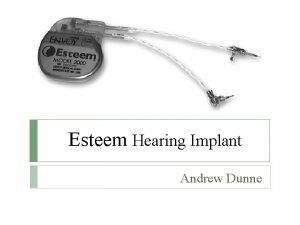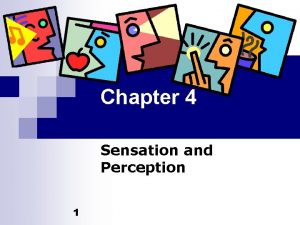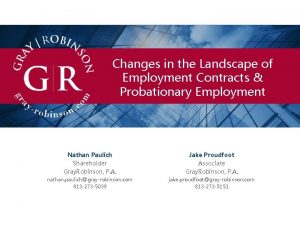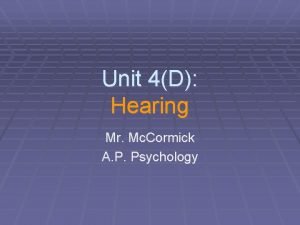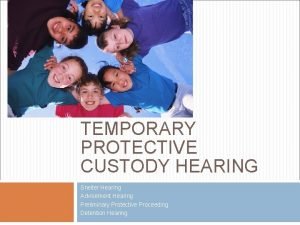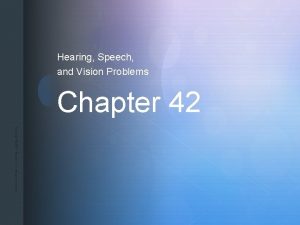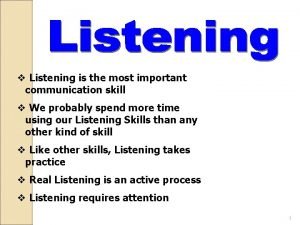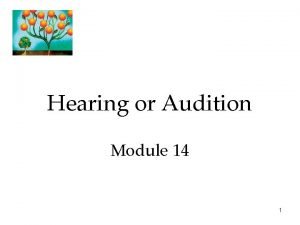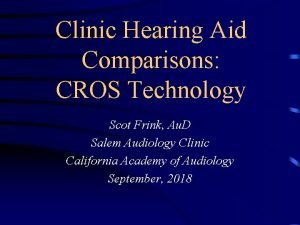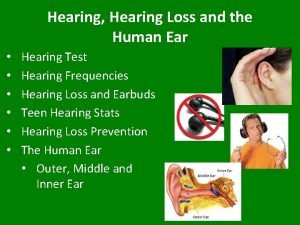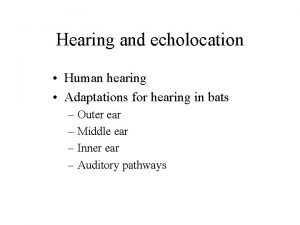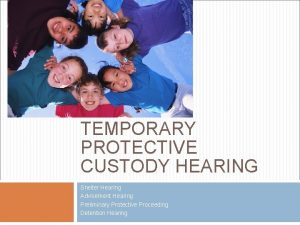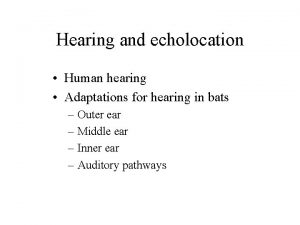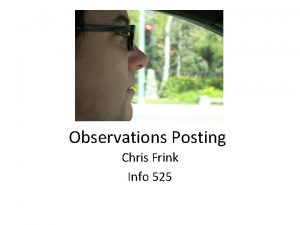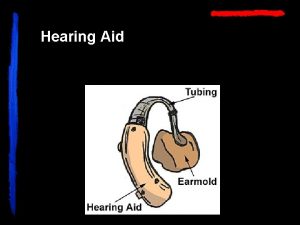Clinic Hearing Aid Comparisons CROS Technology Scot Frink













































































- Slides: 77

Clinic Hearing Aid Comparisons: CROS Technology Scot Frink, Au. D Salem Audiology Clinic California Academy of Audiology September, 2018

Disclaimer • Independent practitioner; do not work for or have any vested interest in any hearing aid manufacturer.

Overview • Brief review of available CROS / Bi. CROS Solutions for Single-Sided Deafness • Review of the 2016 – 17 clinical study by Salem Audiology Clinic

Menti Question 1 A!

Additional Disclaimer • A weakness of product comparisons is technological turnover. • Since this study was completed, all four manufacturers involved—Signia, Starkey, Phonak, and Widex have all released new product platforms, all CROS compatible, some with significant changes. • Despite this, the information is still relevant.

Salem Audiology Clinical Comparison Studies • • • 2000: Phonak (Adult utilization of FM technology) 2005: Phonak, Unitron, Interton (CROS) 2007: Phonak, Starkey (Feedback control) 2010: Phonak, Unitron (CROS) 2014: Phonak, Widex (CROS) 2015: Superpower BTE vs. RIC 2016 -17: Phonak, Widex, Starkey, Signia (CROS) 2017 -18: Amp. CROS Case studies 2017 (in progress): Unitron, Widex, Signia (Tinnitus) 2018 (in development): OTC vs. Prescribed comparison

Salem Audiology Clinical Comparison Studies • • • 2000: Phonak (Adult utilization of FM technology) 2005: Phonak, Unitron, Interton (CROS) 2007: Phonak, Starkey (Feedback control) 2010: Phonak, Unitron (CROS) 2014: Phonak, Widex (CROS) 2015: Superpower BTE vs. RIC 2016 -17: Phonak, Widex, Starkey, Signia (CROS) 2017 -18: Amp. CROS Case studies 2017 (in progress): Unitron, Widex, Signia (Tinnitus) 2018 (in development): OTC vs. Prescribed comparison

Salem Audiology Clinical Comparison Studies • • • 2000: Phonak (Adult utilization of FM technology) 2005: Phonak, Unitron, Interton (CROS) 2007: Phonak, Starkey (Feedback control) 2010: Phonak, Unitron (CROS) 2014: Phonak, Widex (CROS) 2015: Superpower BTE vs. RIC 2016 -17: Phonak, Widex, Starkey, Signia (CROS) 2017 -18: Amp. CROS Case studies 2017 (in progress): Unitron, Widex, Signia (Tinnitus) 2018 (in development): OTC vs. Prescribed comparison

Salem Audiology Clinical Comparison Studies • • • 2000: Phonak (Adult utilization of FM technology) 2005: Phonak, Unitron, Interton (CROS) 2007: Phonak, Starkey (Feedback control) 2010: Phonak, Unitron (CROS) 2014: Phonak, Widex (CROS) 2015: Superpower BTE vs. RIC 2016 -17: Phonak, Widex, Starkey, Signia (CROS) 2017 -18: Amp. CROS Case studies 2017 (in progress): Unitron, Widex, Signia (Tinnitus) 2018 (in development): OTC vs. Prescribed comparison

Menti Question 1 B!

Candidacy • • Very poor or no residual hearing is the worse ear. Aidable or normal hearing in the better ear CROS: No amplification to the better ear Bi. CROS: At least some amplification to the better ear – I have personally found that most patients prefer Bi. CRO even if they are truly a CROS candidate

Candidacy • Word Recognition tests – If there is no residual hearing (confirmed) in the worse ear, test only the better ear. – If there is any residual hearing in the worse ear, you must test binaural to avoid causing auditory deprivation and to truly rule the patient a CROS candidate.

Candidacy • Word Recognition tests – Good ear 80%, bad ear 20%, binaural 96% • FIT BINAURAL! – Good ear 80%, bad ear 20%, binaural 64% • FIT CROS! – Good ear 80%, bad ear 20%, binaural 80% • • ? ? ? -- Toss up! Do a trial binaural first to determine perceived benefit Do a trial Bi. CROS second if no perceived benefit with binaural Amp. CROS?

Study Results • In 2016, both Starkey and Siemens introduced new CROS technology on their Muse and Primax platforms (respectively). • In addition, both Phonak and Widex have launched newer platforms (Venture and Unique). • How to do this study (four players!)

Methodology • Study participants… – 18 previous users, 10 new users – Ages ranged from 26 to 86. – Hearing loss in the better ear ranged from normal (CROS) to severe (60 sloping to 90).

Methodology • Each patient utilized each CROS system for 2 -3 weeks, returning weekly for adjustments and counseling. • Upon completion of each trial, patients fill out subjective surveys on each product, evaluation perception of many areas…

Methodology • Subjective survey analyzed… – – – – Sound Quality for Speech Sound Quality for Music Perception of Localization Improvement Performance in Background Noise Battery Life Cosmetics Ease of use Feedback

Methodology • Objective testing was also completed, evaluating WRS in quiet when presented 90° azimuth to the poorer side – Both sides off – Better ear on (i. e. Aid only) – Both sides on (i. e. CROS transmission utilized). – Presentation at 65 d. BSPL, 25 words per run.

Study Results: Objective Measures Aid Unaided Company Only Aided w/CROS Aided CROS Overall Improvement 43% Starkey 62% 79% 17% 36% 43% Signia 69% 82% 26% 13% 39% 43% Phonak 67% 87% 24% 20% 44% 43% Widex 77% 89% 34% 12% 46% 84% 26% 16% 41% 43% Average 69%

Study Results: Objective Measures Aid Unaided Company Only Aided w/CROS Aided CROS Overall Improvement 43% Starkey 62% 79% 17% 36% 43% Signia 69% 82% 26% 13% 39% 43% Phonak 67% 87% 24% 20% 44% 43% Widex 77% 89% 34% 12% 46% Average 69% 84% 26% 16% 41% 43%

Study Results: Objective Measures Aid Unaided Company Only Aided w/CROS Aided CROS Overall Improvement 43% Starkey 62% 79% 17% 36% 43% Signia 69% 82% 26% 13% 39% 43% Phonak 67% 87% 24% 20% 44% 43% Widex 77% 89% 34% 12% 46% 84% 26% 16% 41% 43% Average 69%

Study Results: Objective Measures Aid Unaided Company Only Aided w/CROS Aided CROS Overall Improvement 43% Starkey 62% 79% 17% 36% 43% Signia 69% 82% 26% 13% 39% 43% Phonak 67% 87% 24% 20% 44% 43% Widex 77% 89% 34% 12% 46% 84% 26% 16% 41% 43% Average 69%

Study Results: Objective Measures Aid Unaided Company Only Aided w/CROS Aided CROS Overall Improvement 43% Starkey 62% 79% 17% 36% 43% Signia 69% 82% 26% 13% 39% 43% Phonak 67% 87% 24% 20% 44% 43% Widex 77% 89% 34% 12% 46% 84% 26% 16% 41% 43% Average 69%

Study Results: Objective Measures Aid Unaided Company Only Aided w/CROS Aided CROS Overall Improvement 43% Starkey 62% 79% 17% 36% 43% Signia 69% 82% 26% 13% 39% 43% Phonak 67% 87% 24% 20% 44% 43% Widex 77% 89% 34% 12% 46% 84% 26% 16% 41% 43% Average 69%

Study Results: Subjective Survey • Sound Quality for Speech – 18 preferred Widex – 7 preferred Phonak – 2 preferred Signia – 1 preferred Starkey

Study Results: Subjective Survey • Sound Quality for Music – 15 preferred Widex (broader dynamic range) – 10 preferred Starkey (2 nd chip? ) – 4 preferred Phonak – None preferred Signia

Study Results: Subjective Survey • Perception of Localization Improvement – 14 preferred Phonak – 11 preferred Widex – 3 preferred Signia – 1 preferred Starkey

Study Results: Subjective Survey • Performance in Background Noise – 17 preferred Phonak (Speech in Loud Noise Algorithm) • Available at the v 70 and v 90 levels, not at v 50 or v 30 – 9 preferred Widex – 2 preferred Signia – None preferred Starkey

Study Results: Subjective Survey • Battery Life – 10 preferred Widex – 8 preferred Signia – 5 preferred Phonak – 5 preferred Starkey

Study Results: Subjective Survey • Cosmetics – 14 preferred Phonak – 8 preferred Starkey – 3 preferred Widex – 3 preferred Signia

Study Results: Subjective Survey • Ease of use (controls) – 9 preferred Signia – 8 preferred Starkey – 8 preferred Phonak – 3 preferred Widex

Study Results: Subjective Survey • Feedback – 12 preferred Phonak – 6 preferred Starkey – 6 preferred Widex – 4 preferred Signia

Study Results: Subjective Survey • Overall Results – 19 preferred Widex – 6 preferred Phonak – 2 preferred Signia – 1 preferred Starkey • However…

Study Results: Subjective Survey • Purchasing Patterns… – 10 purchased Widex – 10 purchased Phonak – 4 purchased Starkey – 4 preferred Signia • Pricing was equal to eliminate that effect

Study Results • Reasons for specific purchases – Cosmetics – Control manipulation – Specific sound qualities (music) – Specific features (Zen Sounds) – Reserve gain (Phonak Naida)

Study Results • Summary of findings – Widex performed exceptionally, but wasn’t always the best choice – What to do when—specific choices based on options available.

Study Results • Widex strengths – Best performance for WRS (46% improvement) – Good performance for music – Best battery life and tinnitus options • Widex weaknesses – Limited form factors (312 BTE, 312 RIC, 13 BTE) – Difficult manual controls / Ease of use

Study Results • Phonak strengths – Good performance for WRS – Best perception of performance in BGN. – The most form factors offered (675 BTE, 13 BTE & RIC, 312 BTE & RIC, FS ITE, ITC) – Best perception of cosmetics • Phonak weaknesses – Battery life (but improved) – Limited tinnitus options

Study Results • Starkey strengths – Better performance for music – Good for each of use / manual controls • Starkey weaknesses – Lowest improvement in WRS – Lowest perception of performance in BGN – Limited form factors (RIC and BTE) – Limited tinnitus options

Study Results • Signia strengths – Best ease of use – Good for tinnitus options • Signia weaknesses – Poorer cosmetics – Limited form factors (312 RIC—at that time)

Study Summary • Each manufacturer have their strengths and weaknesses. – Widex: Speech clarity, music, tinnitus – Phonak: Background noise, cosmetics, form factors. • New product introductions may change this – Rechargeable options (Starkey, Phonak) – Own speech quality (Signia)

Menti Question 1 C!

Verification: CROS transmission Procedure: Real Ear or VSM • Place patient at 90 degrees azimuth, with the “dead” ear facing the presentation speaker(s). • Place the probe mic in the better ear, on the far side from the presentations speaker(s). • Measure as follows: – Unaided (both sides off) – Aided (better ear on only) – Aided with CROS • Repeat with face-to-face, 0 degrees azimuth

Verification: CROS transmission Procedure: Sound Field • Place patient at 90 degrees azimuth, with the “dead” ear facing the presentation speaker(s). • Measure puretones and speech as follows: – Unaided (both sides off) – Aided (better ear on only) – Aided with CROS • Repeat with face-to-face, 0 degrees azimuth

Verification: Sample #1

Verification: Sample #1 Speech Discrimination Unaided: 88%

Verification: Sample #1 Speech Discrimination Unaided: Aid Only: 88% 92%

Verification: Sample #1 Speech Discrimination Unaided: 88% Aid Only: 92% Aid w/CROS: 100%

Verification: Sample #1 Speech Discrimination Unaided: 88% Aid Only: 92% Aid w/CROS: 100%

Verification: Sample #2

Verification: Sample #2 Speech Discrimination Unaided: 40%

Verification: Sample #2 Speech Discrimination Unaided: Aid Only: 40% 72%

Verification: Sample #2 Speech Discrimination Unaided: 40% Aid Only: 72% Aid w/CROS: 96%

Verification: Sample #2 Speech Discrimination Unaided: 40% Aid Only: 72% Aid w/CROS: 96%

Verification: Sample #3

Verification: Sample #3 Speech Discrimination Unaided: 0%

Verification: Sample #3 Speech Discrimination Unaided: Aid Only: 0% 32%

Verification: Sample #3 Speech Discrimination Unaided: 0% Aid Only: 32% Aid w/SR on: 40%

Verification: Sample #3 Speech Discrimination Unaided: 0% Aid Only: 32% Aid w/SR on: 40% Aid, SR, CROS: 60%

Case Studies Case Study: John, age 72

Case Studies Case Study: John, age 72 • • • History of Acoustic Neuroma Previous binaural user Left WRS: 80% @ 80 db. HL Right WRS: CNT (0%) Binaural WRS: 64% Preferred Phonak Audeo V 90 -312 Bi. CROS

Case Studies Case Study: Marc, age 25

Case Studies Case Study: Marc, age 25 • • • Congenitally SSD No previous use of amplification Left WRS: 100% @ 45 db. HL Right WRS: CNT (0%) Binaural WRS: DNT Preferred Phonak Audeo V 90 -312 CROS

Case Studies Case Study: Norma, age 76

Case Studies Case Study: Norma, age 76 • • • Sudden SNHL (viral) No previous use of amplification Left WRS: 96% @ 45 db. HL Right WRS: CNT (0%) Binaural WRS: DNT Preferred Signia Primax 3 Bi. CROS

Case Studies • Case Study: Ambrose, age 36 (not included in formal study)


Case Studies Case Study: Ambrose, age 36 • • • Hearing loss since age 6 due to scarlet fever Right WRS: 76% @ MCL Left WRS: CNT Binaural WRS: DNT Fit with Phonak Virto V 70 ITC Bi. CROS

Case Studies Case Study: Irma, age 56

Case Studies Case Study: Irma, age 56 • Initially presented with a mild binaural loss with slight symmetry (September 2016) • Left WRS: 80% @ 45 db. HL • Right WRS: 88% @ 45 db. HL • Binaural WRS: 92% @ 45 d. BHL • Previous user (fit elsewhere) of both CICs and RICs • Fit with Unitron Stride Pro CICs

Case Studies Case Study: Irma, age 56 • Many issues with performance and fluctuation in volume • Many complaints about the loudness of her own voice (occlusion? ) • Despite good VSM results, generally preferred gain set higher than recommended. • Patient had many problems, nearly cancelled purchase

Case Studies Case Study: Irma, age 56 • October, 2016: Problems with perception of loudness continued along with increasing perception of tinnitus, particularly in the left ear. • Re-tested, and demonstrated significant asymmetrical lowfrequency decrease in her left ear. Referred to ENT.

Case Studies Case Study: Irma, age 56

Case Studies Case Study: Irma, age 56 • December, 2016: Diagnosed with Meniere’s Disease • What do we do now?

Case Studies Case Study: Irma, age 56 • Amp. CROS time! • Re-set start-up program to Acoustic program • Took appropriate measures for matching to Right ear VSM target. • Reprogrammed automatic program for traditional settings when Meniere’s isn’t an issue.

New offerings? • • Phonak: CROS B and rechargeable Widex: Evoke and rechargeable Signia: Nx, M 4 i, Silk and rechargeable Starkey: Muse IQ and rechargeable

Summary • Candidacy evaluation is very important to avoid auditory deprivation • Verification of CROS transmission is just as important for these fittings as regular verification • Analyze and compare; don’t stay in your comfort zone.
 Scot examples
Scot examples Safetymri
Safetymri Flyte hearing aid reviews
Flyte hearing aid reviews Dha
Dha Snaps
Snaps Surveymmonkey
Surveymmonkey Cros bone
Cros bone Brigitte cros
Brigitte cros Brigitte cros
Brigitte cros Scot zarkiewicz
Scot zarkiewicz Wcot and scot column difference
Wcot and scot column difference Sap smtp
Sap smtp Simd scotland postcode lookup
Simd scotland postcode lookup Ovtopodump
Ovtopodump Scot pho
Scot pho Scot pho
Scot pho Sheana bull
Sheana bull Global scot
Global scot First aid merit badge first aid kit
First aid merit badge first aid kit Green hill park medical centre
Green hill park medical centre Comparison of equality ejemplos
Comparison of equality ejemplos Equal comparisons
Equal comparisons Tú eres 1 of 1 (less) simpático que federico.
Tú eres 1 of 1 (less) simpático que federico. Good price and quality spanish tigrados
Good price and quality spanish tigrados Realidades 2 capitulo 1b making comparisons answers
Realidades 2 capitulo 1b making comparisons answers Comparatives equality
Comparatives equality Comparisons ejemplos
Comparisons ejemplos Comparisons with as...as
Comparisons with as...as Make comparisons
Make comparisons Modifiers comparative and superlative
Modifiers comparative and superlative Selection sort number of comparisons
Selection sort number of comparisons What are the two figure of speech that involve comparison
What are the two figure of speech that involve comparison Xkcd 882
Xkcd 882 Comparative adjectives inferiority
Comparative adjectives inferiority Complete each statement
Complete each statement How to count comparisons in insertion sort
How to count comparisons in insertion sort Comparative of equality
Comparative of equality Irregular adverb
Irregular adverb When to use planned contrasts
When to use planned contrasts Modifier
Modifier A priori vs post hoc
A priori vs post hoc Comparative superlative good
Comparative superlative good Planned comparisons
Planned comparisons Internet price comparisons
Internet price comparisons Poems with comparisons
Poems with comparisons Comparisons in french
Comparisons in french Comparisons of equality ejemplos
Comparisons of equality ejemplos Comparisons of adjectives and adverbs
Comparisons of adjectives and adverbs Unequal comparisons in spanish
Unequal comparisons in spanish Realidades 2 capitulo 1b making comparisons
Realidades 2 capitulo 1b making comparisons According to the pictures
According to the pictures Parallel structure with comparisons
Parallel structure with comparisons Quantifiers to make comparisons
Quantifiers to make comparisons What are comparisons
What are comparisons Oae results
Oae results Listening vs hearing
Listening vs hearing Leitfaden personalauswahl
Leitfaden personalauswahl 4 keys to hearing god's voice
4 keys to hearing god's voice Romeo and juliet act v study guide
Romeo and juliet act v study guide Esteem implant
Esteem implant Perception gestalt principles
Perception gestalt principles Who global estimates on prevalence of hearing loss 2020
Who global estimates on prevalence of hearing loss 2020 Loudermill hearing
Loudermill hearing Visual impairment ppt
Visual impairment ppt Hearing and equilibrium
Hearing and equilibrium Mr cormick
Mr cormick Advisement hearing definition
Advisement hearing definition Chapter 42 hearing speech and vision problems
Chapter 42 hearing speech and vision problems Staar
Staar Barriers to communication
Barriers to communication Theories of hearing
Theories of hearing Hearing itinerant service rubric
Hearing itinerant service rubric Hearing aids ennis
Hearing aids ennis Ewc hearing outcomes
Ewc hearing outcomes Difference between hearing and listening
Difference between hearing and listening Asl a true fish story
Asl a true fish story Hail to mary coptic
Hail to mary coptic Hearing on advisement
Hearing on advisement






